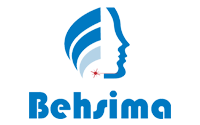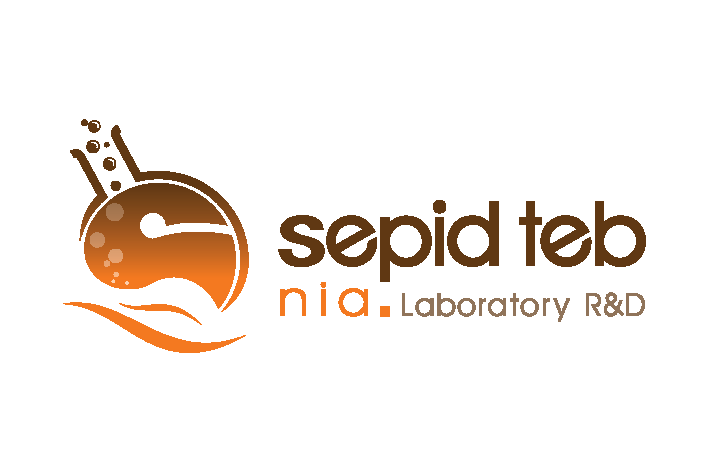شرکت بین المللی عسل دارو کیش یکی از شرکت های اقماری «گروه بین المللی یاقوت رویان» است که بیش از یک دهه فعالیت مستمر در حوزه واردات مکمل های غذایی، محصولات تخصصی مراقبت پوست و مو و محصولات آرایشی-بهداشتی با منشأ گیاهی از معتبرترین برندهای بین المللی را در کارنامه خود ثبت کرده است.
Read moreویدئوی تور مجازی از کمپانی فارمالایف ایتالیا را تماشا کنید!
اگر تاکنون تجهیزات و بخشهای جذاب و تخصصی شرکتهای داروسازی را از نزدیک ندیدهاید، میتوانید از این فرصت استفاده کنید و ویدئوی رسمی شرکت Pharmalife را ببینید.
Read moreblood test used to determine whether a heart is suitable for donation may be leading to unnecessary rejections, and its use should be reviewed. This is the conclusion of a new study published in the journal Circulation: Heart Failure.
Heart failure occurs when the heart is unable to pump enough oxygen-rich blood around the body to help other organs function.
According to the Centers for Disease Control and Prevention (CDC), in the United States, around 5.7 million Americans have heart failure.
In some cases, heart failure can be treated with lifestyle changes - such as a healthy diet, exercise, and quitting smoking - and medications. For end-stage heart failure, however, a heart transplant may be the only option.
According to the United Network for Organ Sharing (UNOS), as of June 10, 2016, there are 4,147 people in the U.S. waiting for a heart transplant.
However, according to Dr. Snehal R. Patel, assistant professor of medicine at Albert Einstein College of Medicine's Montefiore Medical Center in New York, NY, more than half of these patients will not receive a transplant.
"A lot of focus has been on finding ways to sign up more people as organ donors, but there is also a problem in that only an average of 1 in 3 donor hearts are placed," he adds.
In many heart transplant centers, the blood of potential donors is routinely tested for levels of troponin I - a protein that is released in response to heart damage.
Dr. Patel explains that if troponin I levels are high, then a donor heart will often be rejected out of concern that the organ is too damaged to function following transplantation - regardless of whether the heart appears healthy.
Donor troponin I levels do not affect recipient survival
For their study, the researchers assessed the outcomes of 10,943 heart transplant recipients aged 18 and older using data from UNOS. All donor hearts had normal pumping function, the authors note.
The team set out to determine whether there are any differences in outcomes for patients who received a heart from a donor with high troponin I levels.
At 30 days, 1 year, 3 years, and 5 years after heart transplantation, the researchers found no significant differences in survival between recipients whose donors had high troponin I levels and those whose levels were normal.
There was also no association between donor troponin I levels and risk of recipient death 1 year after transplantation, the researchers report.
Additionally, donor troponin I levels made no difference to recipients' incidence of primary graft failure - loss of pumping action that occurs within 30 days of transplantation - and cardiac allograft vasculopathy - a form of heart disease that can limit long-term survival following heart transplantation.
Based on their findings, Dr. Patel and colleagues believe heart transplant centers should make decisions about whether a heart is suitable for transplantation based exclusively on donor troponin I levels.
Saffron is the most expensive spice in the world! It is produced from the saffron crocus flower (Crocus sativus). It is actually the dried stigmas (which are the insides of a flower that catch pollen) and has a deep auburn colour and sweet flavour. The stigmas can only be picked by hand as machines are not delicate enough. It takes 250,000 stigmas to make just half a kilo of saffron, hence its high price, however you only need a pinch as it is very strong.
The Crocus flower is native to Southwest Asia and some areas of Europe. Though it is often harvested to be used as a spice for cooking or for flavoring tea, it is also known to have many health benefits as an herbal supplement. Saffron has lost some of its popularity as a spice due to more common and affordable herbs and spices, yet it still remains as a herbal supplement because of its many medicinal benefits.
Many people do not know the numerous health benefits that can be gained from using a saffron herbal supplement. The amount of ailments it be used to treat is extensive. Below is a list of some of the more common ailments that an herbal saffron supplement can help with.
Depression
Saffron, when taken correctly, is effective at treating mild to moderate depression. It has been proven to be just as effective as some popular prescription medications for depression that is commonly prescribed by doctors to their patients. For it to be effective, the most important thing is to make certain that you are buying 100% real saffron from a reputable dealer. You also need to make sure that the saffron only consists of the red filaments.
When you receive the saffron, it is best to soak it in either broth, milk or warm water before you cook with it. This will help make it more potent when you add it to any recipe. If you do not want to cook with the saffron, an alternative way to use it to treat your depression would be to add it into a tea or some milk to consume. To make it, just mix at least ten strands of the saffron into your drink with some sweetener of your choice. Mix it well and enjoy. When taken at night, it can also help treat depression that is associated with insomnia.
Asthma
Asthma can be a really frustrating problem for a lot of people. It can make it very difficult to breathe. The reason it makes it hard to breathe is because your lungs become inflamed. When your lungs become inflamed, your airways begin to restrict which causes less air to be able to pass through. Saffron helps to clear your airways making it easier for you to breath.
Sleeping Habits
If you are someone that has trouble sleeping, using a saffron herbal supplement can also help you to avoid those restless or sleepless nights. The best way to use saffron to help you sleep is by mixing it with some milk or tea and your favorite sweetener and then drinking it before bed.
Arteriosclerosis
Arteriosclerosis is a very dangerous condition in which the arteries begin to harden. When your arteries harden they have trouble transporting the amount of oxygen needed to different parts of the body. Because this condition is not easy to detect in early stages, it is vital to take precautions early on.
This is where using saffron as an herbal supplement can help. An herbal saffron supplement can decrease the chances of getting arteriosclerosis. The saffron acts as a stimulant and an antioxidant to help increase the circulation throughout the body.
Cancer
According to research, saffron can also help aid in a person's fight with cancer. Cancer cells grow by building and creating their own blood supply in the body. Saffron is thought to help fight cancer by entering the cancer cells and sending them a signal to commit suicide (known as Apoptosis), thus leading to the cancer dying off. Saffron contains Carotenoids which are thought to cause toxic and deadly reactions to certain cancer cells in the body, such as leukemia cells, sarcoma cells, and cancerous carcinoma cells.
Menstrual Relief
For women who have irregular periods, they can take saffron to help regulate their menstruation. An herbal saffron supplement can help induce menstruation as well as help relieve pain that is associated with periods. Along with period relief, saffron can also help to reduce chronic uterus bleeding.
The National Myelodysplastic Syndromes Natural History Study (The National MDS Study) is underway, the ECOG-ACRIN Cancer Research Group and its collaborators announced today. This new study, funded by the National Institutes of Health's National Heart, Lung, and Blood Institute (NHLBI), and performed in collaboration with the National Cancer Institute (NCI), will collect detailed information and biological samples from 2000 adults with myelodysplastic syndromes (MDS) and 500 more patients receiving care for a persistent low red blood cell count (anemia) that cannot be explained. Its purpose is to build a national resource to be used by scientists in future research.
A third group will be formed as a comparison cohort by selecting 1000 patients who will be screened in the study because of symptoms of MDS, but who will be found to not actually have one of the blood disorders. In total, the study will enroll up to 3500 patients, making it the largest-ever prospective study of MDS in the U.S.
It is hoped that this national resource will help researchers to identify the causes and genetic makeup of these serious and sometimes fatal diseases. Other research could lead to new and better ways to diagnosis and treat these conditions.
MDS occur when the blood-forming cells in the bone marrow are damaged and have problems making new blood cells. Considered a type of cancer, these abnormal blood cells fail to grow properly and die sooner than normal cells, leaving affected individuals with low blood counts and a shorter lifespan. Treatment options depend on the disease severity at diagnosis and are limited in their effectiveness.
About 30,000 people every year develop MDS, which occur mostly in adults over 60 years of age and more often in men than women. Common symptoms of MDS include fatigue, unusual bleeding, bruises, and tiny red marks under the skin, paleness, and shortness of breath.
Many people with MDS develop a serious or life-threatening anemia. About one-third of people with MDS develop acute myeloid leukemia, an aggressive blood cancer.
There are many questions about the causes of MDS and what patients can expect during the course of the disease. Unfortunately, MDS lacks a large collection of patient-related disease information and human tissue samples, such as diseased blood and bone marrow samples, which provide the opportunity for scientific research and breakthroughs. Such resources are already in place for other more common diseases, but not yet for MDS.
This study requires the participation of a large network of physicians who support medical research and who examine people experiencing the symptoms of MDS. A number of organizations are collaborating on this effort. For patient recruitment, which is expected to take five to seven years, the NCI is contributing access to its two large cancer research networks, the NCI National Clinical Trials Network (NCTN) and the NCI Community Oncology Research Program (NCORP).
Physicians may enroll their patients in this study if they and their hospital, practice, or cancer center are a member of any cancer research group that belongs to either NCI network. These groups are the Alliance for Clinical Trials in Oncology, ECOG-ACRIN Cancer Research Group, NRG Oncology, and SWOG.
ECOG-ACRIN Cancer Research Group, which is leading the study, has added The National MDS Study to its portfolio of active clinical trials in leukemia, thus streamlining its implementation at clinical centers nationwide.
Patients' blood, bone marrow, and other body tissues will be processed and stored at a central laboratory and biorepository at the Moffitt Cancer Center and its M2Gen subsidiary in Tampa, Fla. Patient information and data from patient samples will be linked and stored centrally at a data coordinating center, under the supervision of The Emmes Corporation, which is coordinating the trial.
At the end of this study, the collected data and specimens will be transferred to the NHLBI and will be available to scientists throughout the country for their own research studies. In this way, The National MDS Study will enable scientists to answer questions about MDS that up to this point have been impractical to study at a single institution or even among small groups of researchers.
Vitamin B1 is a vital human nutrient that belongs to the Vitamin B complex. It plays an important role in maintaining a healthy nervous system and improving the cardiovascular functioning of the body.
Vitamin B1 is one of the eight water-soluble vitamins in the B complex family. It helps in the conversion of carbohydrates into glucose, which in turn is used to produce energy for carrying out various bodily functions. Vitamin B1 is also required for the breakdown of fats and protein.
In addition to these health benefits, it maintain the muscle tone along the walls of the digestive tract and promotes the health of the nervous system, skin, hair, eyes, mouth, and liver. It also improves the body’s ability to withstand stress and is often called the “anti-stress” vitamin.
Important Sources of Vitamin B1
Some of the early symptoms of deficiency might include lethargy, irritability, loss of memory, loss of sleep or appetite, weight loss, indigestion or constipation, and calf muscle tenderness. If left untreated these initial symptoms might lead to a more severe form of thiamin deficiency, known as beriberi. This condition is characterized by nerve, heart, and brain abnormalities, but the symptoms might vary in every person and depends on a number of factors. Some more examples are explained below.
Dry Beriberi: This condition might involve nerve and muscle abnormalities, a prickling sensation in the toes, a burning sensation in the feet at night, leg cramps and muscle atrophy.
Wet Beriberi: Common symptoms might include abnormally fast heart beat, fluid retention in the legs, pulmonary edema, and hypotension, which might result in shock and even death.
CerealBrain Abnormalities: In alcoholics, thiamin deficiency might result in brain abnormalities such as Wernicke-Korsakoff syndrome. Some of its common symptoms include haziness, involuntary eye movements, difficulty in walking and partial paralysis of the eyes among other debilitating symptoms. If ignored, these symptoms could become fatal. Some of the common symptoms of Korsakoff’s psychosis include loss of memory, incoherence and confabulation.
Infantile Beriberi: This variety is commonly seen in newborn children of women already suffering from thiamin deficiency who contract this condition from the mother’s milk. Heart failure, loss of reflexes and aphonia are some of the common symptoms, so be sure to have sufficient levels of vitamin B1 if you are pregnant.
Dr. Norelle Reilly, of the Division of Pediatric Gastroenterology and the Celiac Disease Center at Columbia University Medical Center in New York, NY, has been looking into some issues relating to the gluten-free diet (GFD).
Her commentary is published in The Journal of Pediatrics.
Celiac disease (CD) is an autoimmune disease. A person who has CD cannot eat gluten, a protein found in wheat, rye, and barley.
Doing so can have serious consequences, as it can trigger an immune response that may damage the small intestine or other parts of the digestive system. Irritability and depression are common symptoms.
CD is a genetic condition, and the only treatment is to avoid gluten.
In 2015, around 0.5 percent of Americans were following a strict GFD, 25 percent reported consuming gluten-free foods, and between 15-21 percent rated "gluten-free" as "very important" when buying food.
In contrast, a market survey in 2013 indicated that 31 percent of Americans considered the diet "a fad." By 2015, 47 percent shared this view.
What is a gluten-free diet?
People who have to avoid gluten cannot eat anything containing wheat, barley, or rye flour, and some cannot eat oats.
They must avoid bread, pasta, cakes, cookies, or crackers, and should consume no sauces or gravies thickened with flour, among other items. Alternatively, they can choose gluten-free (GF) versions.
Gluten occurs in some unexpected items, such as luncheon meat, soy sauce, and rice mixes, in some flavorings and preservatives, and in certain medications. A person with CD must check the labels carefully.
Safe foods include meat, fish, fruit, vegetables, rice, potatoes, lentils, and natural seeds and nuts. Specially prepared breads, cakes, cookies, and ready meals are now widely available.
Why go gluten-free?
In 2015, a survey asked 1,500 Americans why they had chosen to "go gluten-free."
Results showed that 35 percent had "no reason" for doing so, 26 percent said it was a "healthier option," and 19 percent wanted to improve their "digestive health." Ten percent had someone in the family with a gluten sensitivity, and 8 percent had a gluten sensitivity.
According to Dr. Reilly, "Out of concern for their children's health, parents sometimes place their children on a gluten-free diet in the belief that it relieves symptoms, can prevent CD, or is a healthy alternative without prior testing for CD or consultation with a dietitian."
She calls for clearer information about the GFD because of "frequent misunderstanding" about gluten.
Misconceptions about the GFD
Dr. Reilly raises a number of issues and misconceptions about avoiding gluten.
One is that it offers a healthy lifestyle choice with no disadvantages.
In fact, Dr. Reilly points out, there is no proven benefit of avoiding gluten, unless a person has CD or a wheat allergy.
She adds that avoiding gluten could mean a higher fat and calorie intake, because packaged GF goods often contain more fat and sugar than their conventional counterparts, potentially contributing to obesity and prediabetes.
Avoiding gluten can also lead to nutritional deficiencies, especially of the B vitamins, folate, and iron, because GF products often lack fortification.
A further belief is that gluten is toxic, but Dr. Reilly notes that no evidence supports this theory. In fact, over-dependence on rice, she suggests, could mean an increased intake of arsenic, which rice has a tendency to absorb.
Some people have a close relative with CD, and they avoid gluten through fear of developing it themselves. Dr. Reilly points out that healthy relatives of people with CD do not need to avoid gluten, and nor do healthy infants who are at risk of developing CD.
What if the GFD is necessary?
A few people will be healthier and have a better quality of life with a GFD, says Dr. Reilly, but they need guidance from an experienced, registered dietitian.
She points out that CD is not the only reason to avoid gluten. Doing so can help relieve symptoms in people with a wheat sensitivity or wheat allergy.
However, there is no scientific evidence that avoiding gluten is better for a child with no confirmed diagnosis of CD or wheat allergy, and doing so could obscure a diagnosis of CD.
A GFD can add to the family budget, as GF products tend to be more costly. Inconvenience and social isolation have been reported by children, says the commentary.
In this sense, a GFD could mean a lower quality of life, potentially posing more risk than benefit.
Protein is one of the three nutrients found in food that the body requires in large amounts. Along with carbohydrates and fat, protein is essential for the human body.
Proteins are made of small compounds called amino acids. There are hundreds of amino acids that exist in nature, but the human body only utilizes 22 of them.
The human body can produce all but nine of the amino acids that it needs. These nine are called essential amino acids and must be consumed through food.
All foods contain differing combinations of amino acids, making a balanced diet essential. In general, animal proteins like meat, dairy, and eggs contain all the essential amino acids.
Plant-based proteins from foods like beans, grains, nuts, and soy are rich in some amino acids but may be lacking in others. This lack underlines the need for a well-balanced diet with variety.
What does protein do?
Protein is the major building block of the human body. Its main job is to build and maintain tissue.
Food sources containing protein.
Many foods are high in protein, including several that are suitable for vegetarians and vegans.
Periods of growth, such as infancy, childhood, and pregnancy, require more protein for this growth to occur. Protein needs are also increased for the following people:
People who have undergone surgery
Active people who are consistently breaking down muscle during exercise
The total amount of protein that is consumed in a day is not nearly as important as how protein intake is spread out over the day.
Many people will consume a small amount of protein at breakfast, a moderate amount at lunch, and a large amount at dinner.
A typical day's eating might involve 10 grams of protein or less at breakfast (cereal), 25 grams at lunch (sandwich), 5 grams for a snack (granola bar), and 40 grams at dinner (chicken or beef).
However, the body can only absorb and use a certain amount protein at one time. The body uses what it can and then what is left over becomes waste. So, it is better for people to spread 60 grams of protein over three or four meals of 15-20 grams each instead of having 60 grams of protein in one meal.
How much protein is needed each day?
There is a certain amount of protein people can aim for to make sure they are they get the most protein use, muscle generation, and recovery every time they eat. This amount depends on the person's body size and how active they are.
Blocks of tofu.
Half a block of tofu contains 18 grams of protein.
A 6-foot, 250-pound man who strength trains five times a week can absorb and utilize more protein than a 5-foot female who does not exercise much. Studies to date have suggested a 20-30 gram per meal protein goal, but more research is needed.
The Recommended Dietary Allowance (RDA) for protein is 0.8 grams per kilogram of body weight per day. The RDA is the minimum amount of protein needed for meeting nutritional requirements, not the maximum.
Endurance athletes need 1.2 to 1.4 grams per kilogram of body weight. Strength training or power athletes require 1.2 to 1.7 grams per kilogram of body weight. The more physically active a person is, the more protein that they will need to consume.
Some research has recommended as much as 2 grams per kilogram of body weight to prevent muscle loss in athletes who want to lose weight and have reduced the amount of calories they consume.
Amount of protein in common food sources
According to the U.S. Department of Agriculture, the following amounts of protein can be found in common sources of food:
Food Amount Grams of protein
Chicken 3 ounces 20
Ground beef 3 ounces 21
Milk 1 cup 9
Egg 1 6
Black beans ¾ cup 11.43
Peanut butter 2 tablespoons 8
Tofu ½ block 18Risks and precautions for consuming protein
Most studies support an intake of up to 2 grams per kilogram of body weight without any negative or adverse effects (including kidney damage). Consuming more than 2.5 grams of protein per kilogram of body weight can increase the risk of the following:
Dehydration
Fatigue
Taking in too many calories
Passing out higher levels of the nutrient calcium in the urine
Eating more than 200 to 400 grams of protein per day can exceed the liver's ability to convert excess nitrogen to a waste product called urea. This can lead to nausea, diarrhea, and other adverse side effects.
Vitamin B12, also called cobalamin, is one of 8 B vitamins. All B vitamins help the body convert food (carbohydrates) into fuel (glucose), which is used to produce energy. These B vitamins, often referred to as B complex vitamins, also help the body use fats and protein. B complex vitamins are needed for healthy skin, hair, eyes, and liver. They also help the nervous system function properly.
All B vitamins are water soluble, meaning that the body does not store them.
Vitamin B12 is an especially important vitamin for maintaining healthy nerve cells, and it helps in the production of DNA and RNA, the body's genetic material. Vitamin B12 works closely with vitamin B9, also called folate or folic acid, to help make red blood cells and to help iron work better in the body. Folate and B12 work together to produce S-adenosylmethionine (SAMe), a compound involved in immune function and mood.
Vitamins B12, B6, and B9 work together to control blood levels of the amino acid homocysteine. High levels of homocysteine are associated with heart disease. However, researchers are not sure whether homocysteine is a cause of heart disease or just a marker that indicates someone may have heart disease.
It is rare for young people to be deficient in vitamin B12, but it is not uncommon for older people to be mildly deficient. This may be because their diets are not as healthy, or because they have less stomach acid, which the body needs to absorb B12. Low levels of B12 can cause a range of symptoms including:
Fatigue
Shortness of breath
Diarrhea
Nervousness
Numbness
Tingling sensation in the fingers and toes
Severe deficiency of B12 causes nerve damage.
Others at risk for B12 deficiency include:
Vegans and vegetarians who do not eat dairy or eggs, since vitamin B12 is found only in animal products
People with problems absorbing nutrients due to Crohn disease, pancreatic disease, weight loss surgery, or medications
People who are infected with Helicobacter pylori, an organism in the intestines that can cause an ulcer. H. pylori damages stomach cells that make intrinsic factor, a substance the body needs to absorb B12
People with an eating disorder
People with HIV
People with diabetes
The elderly
Folic acid (vitamin B9), especially when taken in high doses, can mask the symptoms of a vitamin B12 deficiency. The danger is that without symptoms, someone with a vitamin B12 deficiency may not know it, and could run the risk of developing nerve damage. You should talk to your doctor first if you plan to take more than 800 mcg of folic acid, to make sure you do not have a B12 deficiency.
Vitamin B12 is used for:
Pernicious anemia
Pernicious anemia is a type of anemia that happens when stomach cells are not able to make intrinsic factor. Without intrinsic factor, your body cannot absorb vitamin B12. Symptoms include:
Weakness
Pale skin
Diarrhea
Weight loss
Fever
Numbness or tingling sensation in the hands and feet
Loss of balance
Confusion, memory loss, and moodiness
Vitamin B12 supplements in high doses, either given as injections or orally, are prescribed to treat pernicious anemia. Pernicious anemia can be a dangerous condition and should always be treated by a doctor.
Heart disease
Many studies suggest that people with high levels of the amino acid homocysteine are almost two times more likely to develop coronary artery disease and 2.5 times more likely to have a stroke than those with normal levels. B complex vitamins, especially vitamins B9, B6, and B12, help lower homocysteine levels. However, researchers do not know whether high homocysteine levels actually cause heart disease.
People who are concerned about heart disease should try to get enough B vitamins from healthy foods. However, in some cases doctors recommend taking B vitamins to lower homocysteine levels. If you are worried about heart disease, ask your doctor whether taking a B vitamin supplement would be right for you.
Age-related macular degeneration (AMD)
One large study found that women who took 1,000 mcg of vitamin B12, along with 2500 mcg of folic acid and 500 mg of vitamin B6 daily, reduced the risk of developing AMD, an eye disease that can cause loss of vision.
Fatigue
Fatigue is one of the symptoms of a vitamin B12 deficiency. One small study suggested that some people who were not deficient in B12 might gain more energy from B12 shots. However, more research is needed. One preliminary study indicated that people with chronic fatigue syndrome might benefit from B12 injections. More research is needed.
Breast cancer
Although there is no evidence that vitamin B12 alone reduces the risk of breast cancer, population studies have shown that women who get more folate in their diet have lower risk of breast cancer. Vitamin B12 works with folate in the body, so it may help reduce breast cancer risk. Another preliminary study suggested that postmenopausal women who had the lowest amounts of B12 in their diet had an increased risk for breast cancer.
Male infertility
Studies suggest that vitamin B12 supplements may improve sperm counts and sperm's ability to swim. More research is needed.
Dietary Sources
Vitamin B12 is found only in animal foods. Good dietary sources include:
Fish
Shellfish
Dairy products
Organ meats, particularly liver and kidney
Eggs
Beef
Pork
Available Forms
Vitamin B12 can be found in multivitamins (including children's chewable and liquid drops), B complex vitamins, and individual supplements. Vitamin B12 is available in intranasal forms (administered through the nose), as well as oral tablets, capsules, soft gels, and lozenges. Vitamin B12 is also sold under the names cobalamin and cyanocobalamin.
How to Take It
If your diet includes meat, fish or shellfish, milk, and other dairy products, you should be able to meet the recommended daily requirements without taking a vitamin B12 supplement. Vegetarians who do not eat any animal products should take a vitamin B12 supplement with water, preferably after eating. Elderly people may need larger amounts of vitamin B12 than younger people because the body's ability to absorb vitamin B12 from the diet declines with age.
If you are considering taking a B12 supplement, ask your health care provider to help you determine the right dose for you.
Daily recommendations for dietary vitamin B12 are listed below.
Pediatric
Newborns to 6 months: 0.4 mcg (adequate intake)
Infants 6 months to 1 year: 0.5 mcg (adequate intake)
Children 1 to 3 years: 0.9 mcg (RDA)
Children 4 to 8 years: 1.2 mcg (RDA)
Children 9 to 13 years: 1.8 mcg (RDA)
Teens 14 to 18 years: 2.4 mcg (RDA)
Adult
19 years and older: 2.4 mcg (RDA)*
Pregnant women: 2.6 mcg (RDA)
Breastfeeding women: 2.8 mcg (RDA)
*Because 10 to 30% of older people may not absorb B12 from food very well, people over 50 should meet their daily requirement through either foods fortified with vitamin B12 or a supplement containing B12.
Precautions
Because of the potential for side effects and interactions with medications, you should take dietary supplements only under the supervision of a knowledgeable health care provider.
Vitamin B12 is considered safe and nontoxic, however taking any one of the B vitamins for a long period of time can result in an imbalance of other important B vitamins. For this reason, you may want to take a B complex vitamin that includes all B vitamins. Taking folic acid at high doses can hide a vitamin B12 deficiency. So these vitamins are often taken together. Talk to your doctor before taking more than 800 mcg of folic acid.
People with abnormal levels of red blood cells, or abnormalities in their red blood cells, should work with a doctor to determine whether B12 is appropriate for them. In some instances, B12 can be beneficial. But it can be harmful with other health conditions. For instance, B12 supplements can cause serious damage to the optic nerve in people with Leber's disease (a disease of the eye). Again, be sure to work with your doctor.
Possible Interactions
If you are currently being treated with any of the following medications, you should not use vitamin B12 supplements without first talking to your health care provider.
Medications that reduce levels of B12 in the body include:
Anti-seizure medications -- including phenytoin (Dilantin), phenobarbital, primidone (Mysoline)
Chemotherapy medications -- particularly methotrexate
Colchicine -- used to treat gout
Bile acid sequestrants -- used to lower cholesterol; include colestipol (Colestid), cholestyramine (Questran), and colsevelam (Welchol)
H2 blockers -- used to reduce stomach acid; include cimetidine (Tagamet), famotidine (Pepcid AC), ranitidine (Zantac)
Metformin (Glucophage) -- medication taken for diabetes
Proton pump inhibitors -- used to reduce stomach acid; include esomeprazole (Nexium), lansprazole (Prevacid), omeprazole (Prilosec), rabeprazole (Aciphex)
Antibiotics, Tetracycline: Vitamin B12 should not be taken at the same time as
Phthalates come from a class of industrial chemicals that are used to make food packaging materials and other items involved in the manufacture of fast food and dairy produce.
Previous studies have suggested that these chemicals leach out of plastic food packaging, causing contamination of highly processed foods.
Researchers at Milken Institute School of Public Health at the George Washington University in Washington, DC, led by Ami Zota, are among the first to investigate the relationship between fast-food consumption and exposure to the chemicals.
Zota and coauthors examined data for 8,877 participants. To gather the information, they distributed a questionnaire and collected a urinary sample for each respondent.
The subjects answered detailed questions on what food they had eaten, including fast food, in the last 24 hours.
The researchers tested the urinary samples to see if they contained the breakdown products of two phthalates: di-isononyl phthalate (DiNP) and di-2-ethylhexylphlatate (DEHP).
23.8% more DEHP, 40% more DiNP in fast-food consumers
Findings showed that the more fast food an individual reported eating, the higher their exposure to phthalates.
Compared with those who had not consumed fast food, the urine of participants who ate the most fast food had 23.8% higher levels of the breakdown product for DEHP, and the levels of DiNP metabolites were 40% higher.
Meat items and grain-based foods, such as bread, cake, pizza, burritos, rice dishes and noodles, appeared to contribute the most significantly to phthalate exposure, supporting previous findings that grains are an important source of phthalate exposure.
Another chemical used in plastic food packaging, Bisphenol A (BPA), has been linked with health and behavioral problems, especially among young children. Zota's team also looked for signs of BPA among their participants.
High BPA levels after eating fast-food meat products
The team found no association between total fast-food intake and BPA, but those who consumed fast-food meat products had higher BPA levels than those who had not eaten fast food.
Ongoing research suggests that phthalates feature in a range of personal products, toys, perfume and even foods. In 2008, Congress banned phthalates in children's toys due to concerns that they could be hazardous to health.
There is also evidence that DEHP and DiNP leach out of products and into the body, potentially causing problems for the reproductive system, including infertility.
However, they remain in use, and it could be years before large studies confirm a link between phthalates, fast food and health problems, says Zota.
Meanwhile, she suggests avoiding frequent consumption of fast foods because of the amounts of fat, salt and calories that they contain.
She says people "can't go wrong by eating more fruits and vegetables and less fast food." She adds that the health benefits of consuming whole foods "go far beyond the question of phthalates."
از آنجا که سیستم بدن این افراد متفاوت از هم عمل می کند، برای کاهش وزن لازم است از اصول متفاوتی پیروی کنند. این توصیه های پاییزه برای گروه های خونی مختلف تنظیم شده است.
گروه خونی A
این افراد درونگرا، مسئول، با دقت و حساس به جزئیات هستند. بدن آنها بیشتر از هر چیز به میوه ها و سبزیجات واکنش مثبت نشان می دهد و این، بهترین خوراکی برای آنهاست.
بهترین رژیم برای آنها استفاده از ماهی است. آنها می توانند برای کاهش وزن هفته ای دو بار از ماهی استفاده کنند. ماهی هم به صورت پخته در فر و هم کبابی برای کاهش وزن مفید است. آنها می توانند سبزیجات را به غیر از بادمجان، قارچ و کلم همراه با ماهی مصرف کنند. هفته ای دو بار خوردن غذای گیاهی هم می تواند برای کاهش وزن آنها مفید باشد. فرآورده های سویا هم برای آنها عالی است. پیتزای سویا، ماکارونی با سویا و غذاهای اینچنینی می تواند به خوبی به کاهش وزن آنها کمک کند. این افراد بهتر است روغن نباتی را جایگزین روغن های حیوانی مثل کره کنند.
گروه خونی B
افراد دارای گروه خونی B مستقل و خودکفا، هنرمند و دوستدار دانش هستند. بهترین غذا برای آنها لبنیات است. آنها بهتر است لبنیات و گوشت قرمز را در برنامه غذایی خود بیشتر کنند.
این افراد بهتر است گوشت مرغ را کمتر از هر چیز دیگری در برنامه غذایی خود بگنجانند. بهترین جایگزین برای کاهش وزن این افراد ماهی و گوشت قرمز است. بدن این افراد با سبزیجاتی مثل هویج، کلم بروکسل، گل کلم، انواع فلفل، چغندر و بادمجان سازگاری خوبی دارد. آنها می توانند به راحتی پیتزای گیاهی بخورند. چون پنیر پیتزا برای آنها خوب است. یکسری پنیر گیاهی برای پخت غذا برای آنها مفید است. برای مثال توفو در خورش، پنیر کبابی و پنیرهای دیگر. آنها می توانند سالاد را به همراه ماست صرف کنند و با این برنامه شاهد کاهش وزن و سلامت و شادابی بیشتر خود باشند.
گروه خونی O
مهمترین ویژگی شخصیتی این افراد این است که فعال، خلاق، بلند پرواز و خوش فکر هستند. آنها اولین گروه خون در بین اجداد انسان ها بوده اند و بدن آنها با مصرف گوشت قرمز سازگاری زیادی دارد.
خوراکی هایی مثل بروکلی و اسفناج و سبزیجاتی که رنگ آنها سبز تیره است، برای این گروه عالی است. برای داشتن یک رژیم کاهش وزن بهترین راه کم کردن غلات و افزودن پروتئین است. کباب گوشت قرمز به همراه سبزیجات بخارپز بهترین رژیم برای آنهاست. البته باید توجه کنند وضعیت سلامت آنها به گونه ای نباشد که محدودیت مصرف گوشت قرمز داشته باشد. توجه به بیماری هایی مثل نقرس، فشارخون و بیماری های قلبی مقدم بر توجه به گروه خونی است. به علاوه آنها می توانند پیاز قرمز، انواع فلفل، کلم قمری، کدو تنبل، جعفری، تره فرنگی، زیتون، کلم پیچ و جگر را هم در برنامه غذایی خود بگنجانید.
گروه خونی AB
آنها خودرای و مستقل، علاقمند به مطالعه و ورزش و کم حرف هستند. آنها دارای کامل ترین گروه خونی بین افراد بشر هستند. بدن آنها بیشتر از هر چیز با گوشت سفید هماهنگ می شود.
حبوبات و غلات برای این گروه عالی است. یک رژیم متعادل که در آن انواع حبوبات، غلات، سبزیجات سبز و گوشت مرغ و ماکیان و لبنیات باشد، بهترین رژیم برای کاهش وزن آنهاست. به جز میگو که بهتر است با احتیاط مصرف کنند، استراتژی کاهش وزن این افراد بهتر است کم خوردن باشد تا غذای خاص خوردن. انواع ماست، پاستا، میوه هایی مثل آناناس، پنیرها و پروتئین های گیاهی می تواند به سلامت این افراد کمک کند. در واقع آنها بهتر است یک برنامه کامل که تمام گروه های غذایی را شامل می شود انتخاب کنند و با توجه به کاهش مقدار غذای مصرفی به کاهش وزن اقدام کنند.
This section looks at the potential health benefits of vitamin D, from assisting good bone health to possible cancer prevention.
1) Vitamin D for healthy bones
Vitamin D plays a substantial role in the regulation of calcium and maintenance of phosphorus levels in the blood, two factors that are extremely important for maintaining healthy bones. We need vitamin D to absorb calcium in the intestines and to reclaim calcium that would otherwise be excreted through the kidneys.
Vitamin D deficiency in children can cause rickets, a disease characterized by a severely bow-legged appearance triggered by impaired mineralization and softening of the bones.
In adults, vitamin D deficiency manifests as osteomalacia or osteoporosis. Osteomalacia results in poor bone density, muscular weakness and often causes small pseudo fractures of the spine, femur and humerus. Osteoporosis is the most common bone disease among post-menopausal women and older men.
2) Reduced risk of flu
Children given 1,200 IU of vitamin D per day for 4 months during the winter reduced their risk of influenza A infection by over 40%.2
3) Reduced risk of diabetes
Several observational studies have shown an inverse relationship between blood concentrations of vitamin D in the body and risk of type 2 diabetes. In type 2 diabetics, insufficient vitamin D levels may have an adverse effect on insulin secretion and glucose tolerance.3 In one particular study, infants who received 2,000 IU/day of vitamin D had an 88% lower risk of developing type 1 diabetes by the age of 32.
4) Healthy infants
Children with normal blood pressure who were given 2,000 IU/day had significantly lower arterial wall stiffness after 16 weeks compared with children who were given only 400 IU/day.
Low vitamin D status has also been associated with a higher risk and severity of atopic childhood diseases and allergic diseases, including asthma, atopic dermatitis and eczema. Vitamin D may enhance the anti-inflammatory effects of glucocorticoids, making it potentially useful as a supportive therapy for people with steroid-resistant asthma.5,8
5) Healthy pregnancy
Pregnant women who are deficient in vitamin D seem to be at greater risk of developing preeclampsia and needing a cesarean section. Poor vitamin D status is also associated with gestational diabetes mellitus and bacterial vaginosis in pregnant women. It is also important to note that vitamin D levels that were too high during pregnancy were associated with an increase in food allergy of the child during the first two years of life.
6) Cancer prevention
Vitamin D is extremely important for regulating cell growth and for cell-to-cell communication. Some studies have suggested that calcitriol (the hormonally active form of vitamin D) can reduce cancer progression by slowing the growth and development of new blood vessels in cancerous tissue, increasing cancer cell death and by reducing cell proliferation and metastases. Vitamin D has an influence on more than 200 human genes, which can be impaired when D status is suboptimal.3
Vitamin D deficiency has also been associated with an increased risk of cardiovascular disease, hypertension, multiple sclerosis, autism, Alzheimer's disease, rheumatoid arthritis, asthma severity and swine flu, however more reliable studies are needed before these associations can be proven.





























